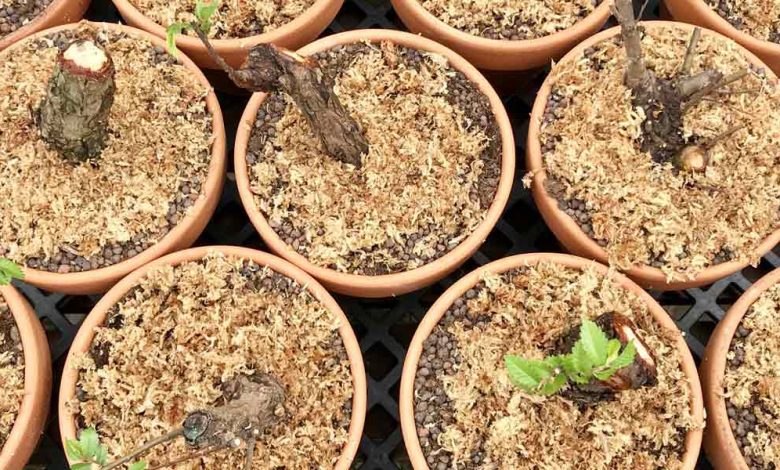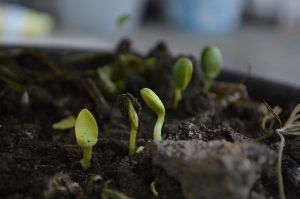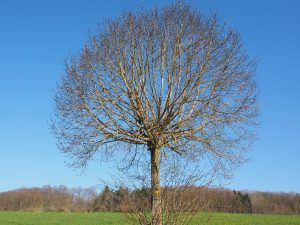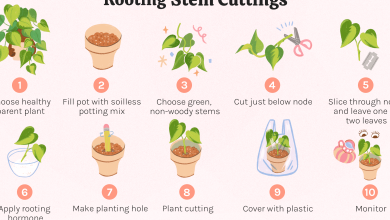Elm Cuttings: [Grafts, Time, Rooting and Planting]

 Ulmus or elms is a family of Ulmaceae trees, notable for growing up to 20 meters high.
Ulmus or elms is a family of Ulmaceae trees, notable for growing up to 20 meters high.
Its trunk is robust and straight, maintaining a thick and protective bark that can easily crack over time.
Its size makes it a perfect tree for spacious sites, being an ideal specimen to plant if you want to have shade when you get fresh air.
In addition, in Spain they are abundant and give excellent wood, making them highly valued trees for the construction of furniture and wooden elements.Are you interested in knowing all the information about its reproduction by means of elm cuttings? Keep reading.
With what other plants or trees can we graft the elm cuttings?
Although the elm is a large family of very versatile plants, they are few known in the field of grafting.This does not mean that there are no plants or trees that can be compatible with it.
But, in general, such good results have not been obtained in this matter, so it is not a procedure that is usually recommended .
What is the best time to plant elm cuttings?
Elms can be conveniently propagated from cuttings in the spring , before the tree begins to flower. Keep in mind that it is beneficial to prune the plant and take the cuttings from it, since this way the mother plant will suffer less.
On the other hand, the cuttings must be strong branches, avoiding using the finest branches, because they do not usually give good results.
How to get elm cuttings to root properly?
 An important point to guarantee the correct formation of roots is that the soil is adequate, both in terms of nutrition and humidity.
An important point to guarantee the correct formation of roots is that the soil is adequate, both in terms of nutrition and humidity.
Elm cuttings need a certain level of humidity to be able to develop, and it is recommended that they be kept well protected from heat.
However, care should be taken with waterlogging or water retention , as this can cause the cuttings to rot.For this reason, it is convenient that they be placed in pots or containers with a good drainage system, allowing the necessary humidity to be maintained.
Likewise, the ideal is that the branches remain firm in the substrate and that they have the presence of some leaves, which will facilitate the process.On the other hand, it is also a good idea to use a rooting product , it can be liquid or powder, before planting each cutting.
How should we take the elm cuttings to plant them?
 Taking elm cuttings can be a procedure that is carried out at the same time as the pruning of the mother plant.
Taking elm cuttings can be a procedure that is carried out at the same time as the pruning of the mother plant.
This is convenient, since in this way more wounds than necessary should not be created in the plant and its full potential will be used.
Elm cuttings should be cut diagonally , with scissors or some other sharp tool that makes a single clean cut.
They should measure between 10 and 15 cm long , with a good width.At the same time, they should be tender or semi-woody , which gives them flexibility and greater rooting potential.
How long should we leave elm cuttings in water?
Elm cuttings must spend a certain time in water before being planted in the traditional way.This can be for about 15 or 30 minutes , considering that it is appropriate to include a product in the water to improve the rooting of the cuttings.
In this way, the cuttings will be able to develop in a better way and have help during the formation of the roots that they need to live.
Is it convenient to use fertilizer or compost?
 It is convenient to treat this type of plants with care, avoiding paying them until they sprout properly .
It is convenient to treat this type of plants with care, avoiding paying them until they sprout properly .
Despite this, it is recommended that the substrate where the cuttings are to be placed has a high nutrient content.
This allows the use of homemade organic matter such as compost or manure in the soil where the cuttings will be planted initially.After that, it is necessary to wait for them to develop a little before starting with the sequential fertilization, which must be high quality organic.
How long does it usually take for an elm cutting to come out?
 The development of elm cuttings is usually fast, as long as the whole process is done in the best possible way.
The development of elm cuttings is usually fast, as long as the whole process is done in the best possible way.
It can take from 20 to 40 days for the process of sprouting leaves and for the roots to grow correctly.
However, there are some specimens that can take up to 2 months to develop, depending on their living conditions.
It is recommended to check the cuttings after this time and discard those that have not developed , just as you can transplant those that already have their roots.This way you can enjoy your new elm plants, taking care that their development is carried out properly.
If you want to go deeper, you can see: Seeding Ulmus Pumila.


![Photo of Pests and Diseases of Carnations: [Detection, Causes and Solutions]](https://www.complete-gardening.com/wp-content/uploads/2022/08/pests-and-diseases-of-carnations-detection-causes-and-solutions-390x220.jpg)
![Photo of Strelitzia Augusta: [Planting, Care, Irrigation and Substrate]](https://www.complete-gardening.com/wp-content/uploads/2022/08/strelitzia-augusta-planting-care-irrigation-and-substrate-390x220.jpg)
